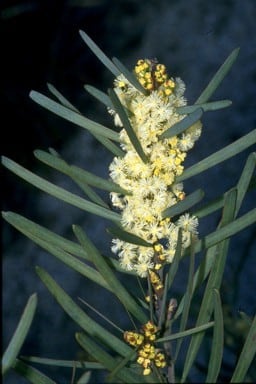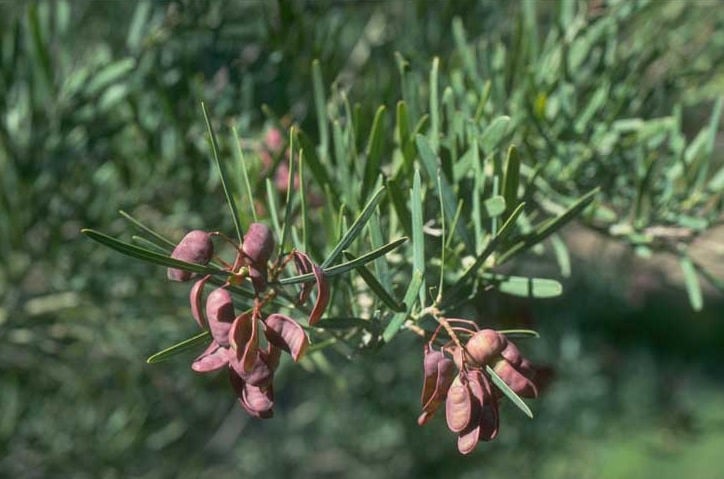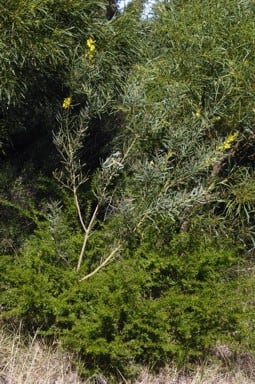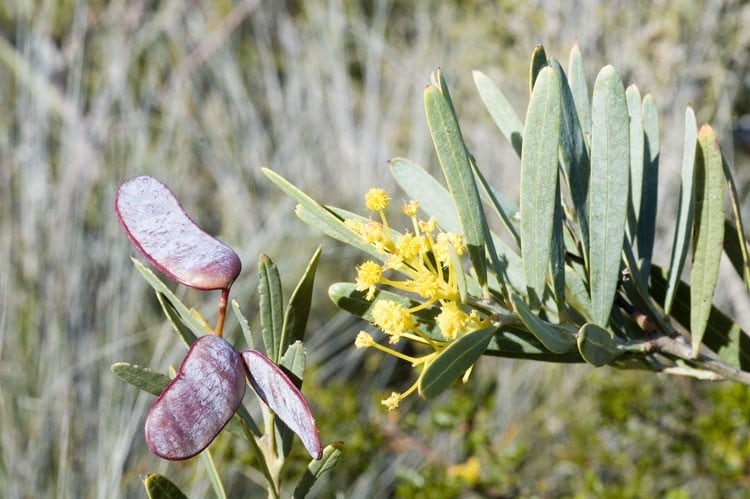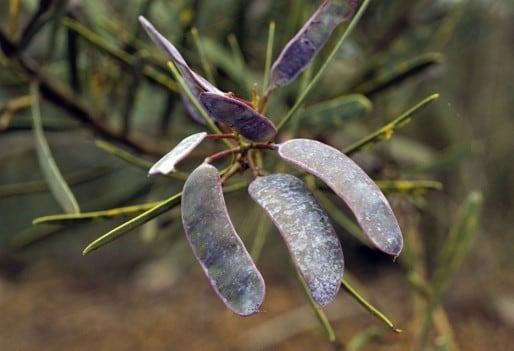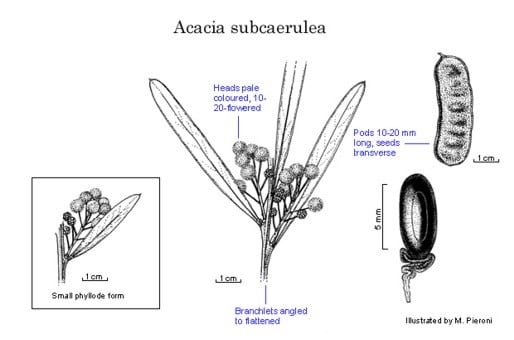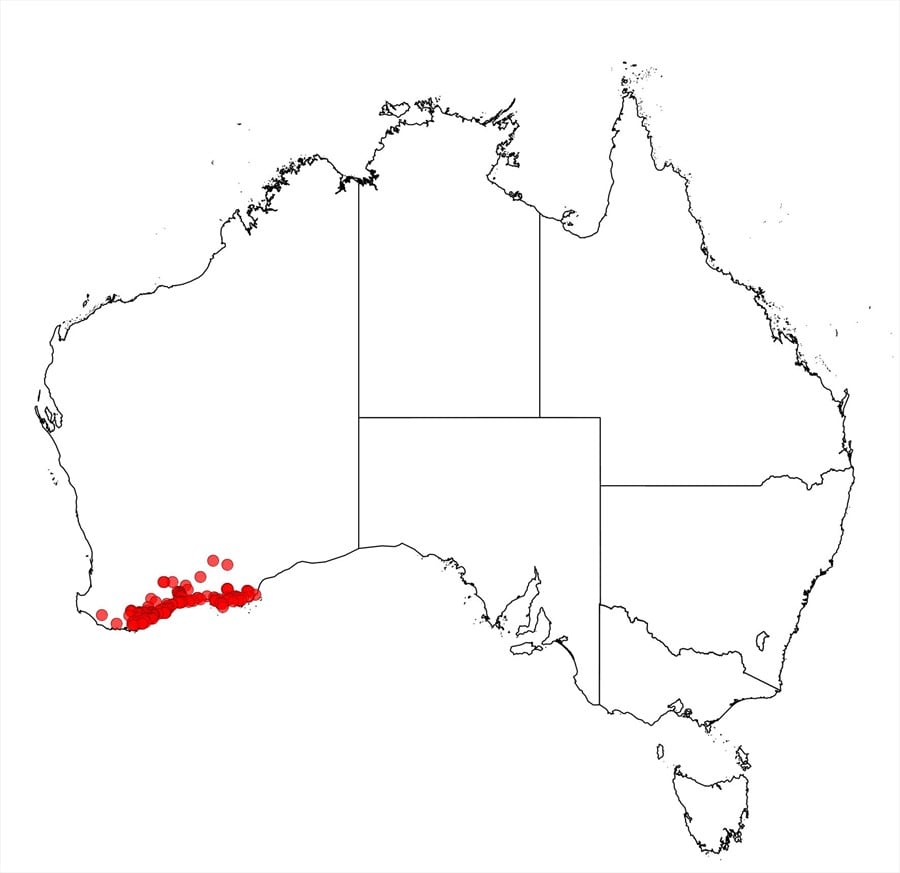Acacia subcaerulea Lindl.
WATTLE
Acacias of Australia
Common Name
Blue-barked Acacia
Family
Fabaceae
Distribution
Occurs within c. 80 km of the coast from the Stirling Ra.–Albany area E to near Israelite Bay and on Mondrain Is., south-western W.A.
Description
Closely related to A. suaveolens but differing mainly in the following ways: Phyllodes 2.5–8 cm long, infrequently 10 cm, 3–10 mm wide, usually l:w = 5–13 (12–25 in A. suaveolens), normally slightly thicker (therefore more wrinkled when dry) and straight. Raceme axes 2–4 cm long; peduncles (flowering) 5–10 mm long, slightly thicker; heads 10–20-flowered.
Habitat
Grows in sand, loam, or sometimes clay, commonly on granite or quartzite hills, in heath, closed scrub, open mallee scrub or low woodland.
Specimens
W.A.: Porongurup Ra., May 1934, E.M.Barker s.n. (PERTH); East Mt Barren, R.J.Cranfield 1432 (PERTH); Cape Arid Natl Park, J.W.Green 5147 (PERTH); Mt Ney, M.A.Burgman 1135 & S.McNee (PERTH); 5.5 km from Pallinup R. crossing towards Albany, B.R.Maslin 2596 (CANB, PERTH).
Notes
Specimens with short phyllodes were described as A. apiculata and A. subcaerulea var. parvifolia but these appear not to warrant formal recognition.
Phyllodes sometimes resemble those of some forms of A. leptopetala.
G.Bentham, Fl. Austral. 2: 369(1864) erroneously synonymised A. hemiteles under A. subcaerulea.
Future studies may show that A. subcaerulea is better treated as an infraspecific taxon of A. suaveolens. These taxa are usually reliably distinguished by the characters given above, especially by the number of flowers per head and the phyllode l:w ratio. However, a fruiting specimen from Mt Ragged (B.Barnsley 313, PERTH) has unusually elongate phyllodes (l:w = 20–25), like those of A. suaveolens. The specimen is tentatively referred to A. subcaerulea because the phyllodes have dried wrinkled and because other specimens from Mt Ragged show the heads to be c. 20 flowers. The combined distributions of A. subcaerulea and A. suaveolens resembles that of A. myrtifolia.
FOA Reference
Data derived from Flora of Australia Volumes 11A (2001), 11B (2001) and 12 (1998), products of ABRS, ©Commonwealth of Australia
Author
B.R.Maslin
Minor edits by J.Rogers
This identification key and fact sheets are available as a mobile application:
URL: https://apps.lucidcentral.org/wattle/
© Copyright 2018. All rights reserved.

